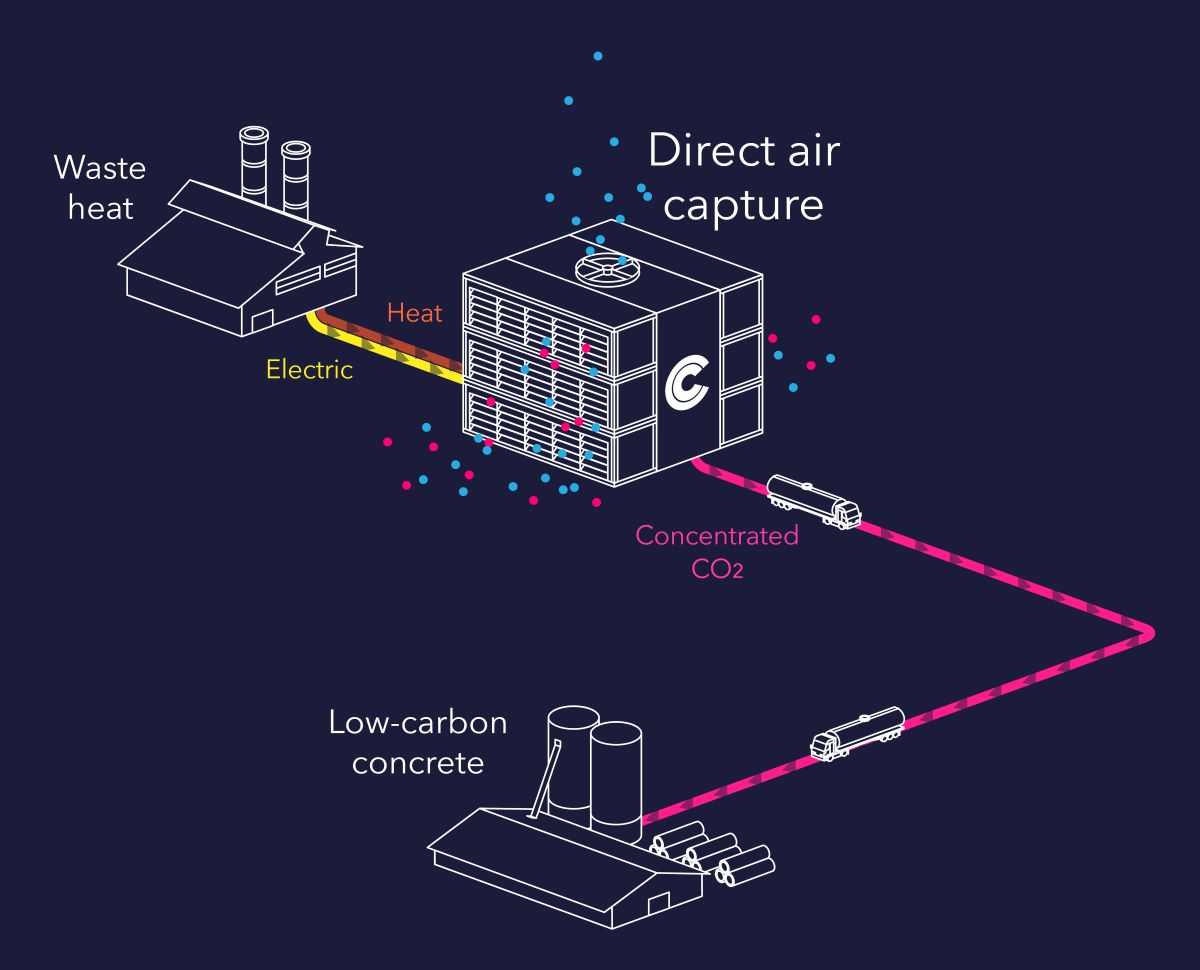CO2 in Air Will Be Locked Away in The Concrete
At the Gary Works of U. S. Steel in Gary, Indiana, University of Illinois will be in charge of the front-end engineering design study. It is anticipated that the study, which will concentrate on improving a direct air capture and utilization system, will help in the development of long-term strategies for carbon reduction.
The United States Department of Energy’s National Energy Technology Laboratory (DOE-NETL) has selected the University of Illinois Urbana-Champaign’s Prairie Research Institute (PRI) for an award of $3,459,554 for research and development to support a front-end engineering design (FEED) study on carbon dioxide (CO2) removal technologies.
The development of a direct air capture and utilization system (DACUS), which can permanently mineralize 5,000 metric tons of CO2 per year from ambient air, will be the main topic of the study. The designed system, if constructed, would be larger than any direct air capture system currently in use (DAC).
“We’re excited to bring together a strong team of academic and industry collaborators to accelerate effective, economical carbon capture and use,” said Dr. Kevin OBrien, the project’s principal investigator and leader of PRI’s Illinois Sustainable Technology Center.
Utilizing DAC technology created by CarbonCapture Inc., the study will get underway at U.S. Steel’s Gary Works in Gary, Indiana. In order to reduce energy and transportation costs, the technology will make use of the plant’s waste heat, energy, and location.
“U. S. Steel is committed to progressing our efforts described in our Climate Strategy Report to decarbonize and accelerate towards a lower carbon future, but we know that one company’s actions are not enough,” said Rich Fruehauf, Senior Vice President – Chief Strategy & Sustainability Officer at U. S. Steel. “Achieving our goal of net-zero emissions by 2050 is going to take unprecedented innovation and collaboration.”

Using CarbonCure’s CO2 removal and utilization technologies, the liquified gas will be transported to Ozinga ready mix concrete plants where it will be directly injected into the concrete as it is being mixed. CO2 emissions will then be captured from the atmosphere. When CO2 is injected, it immediately mineralizes and is trapped in the concrete, never to leave again.
“Permanent CO2 storage is a crucial component of carbon removal. As the most recent Intergovernmental Panel on Climate Change makes clear, the permanent storage of ‘centuries or more’ that carbon mineralization in concrete provides is a critical component of durable carbon removal,” said Robert Niven, Chair and CEO of CarbonCure Technologies. “CarbonCure is excited to contribute to this crucial research to help scale the solutions we need to ensure our climate future.”
“Ozinga’s purpose is to make a positive impact, and embracing innovation in concrete sustainability is key to ensuring a better environment for generations to come,” said Ryan Cialdella, Vice President of Innovation and Market Development at Ozinga. “We believe early collaboration is important to find the best solution for reduction of carbon emissions, and our development and testing of lower embodied CO2 mix designs has made participating in this important study a great fit.”
“We’re very excited about participating in this groundbreaking study,” said Adrian Corless, CEO of CarbonCapture Inc. “Direct air capture is particularly effective when energy costs can be reduced via the use of waste heat and the captured CO2 can be permanently stored in concrete. At scale, we think this solution will lead to the removal of massive amounts of CO2 from the atmosphere.”
This FEED study will also provide data for Visage Energy Corp. to assess the impact on job creation, regional economic impact, and environmental justice issues.
Sargent & Lundy will provide the constructability review and costing of the DAC’s integration within the steel plant. Ecotek Group will design the infrastructure to connect the DAC system and the plant.
In the project selection announcement, the DOE said that the advancement of DAC technology could play a critical role in conjunction with aggressive decarbonization in combatting the climate crisis and achieving the Biden-Harris Administration’s goal of net-zero greenhouse gas emissions by 2050.
Note: Content may be edited for style and length.




